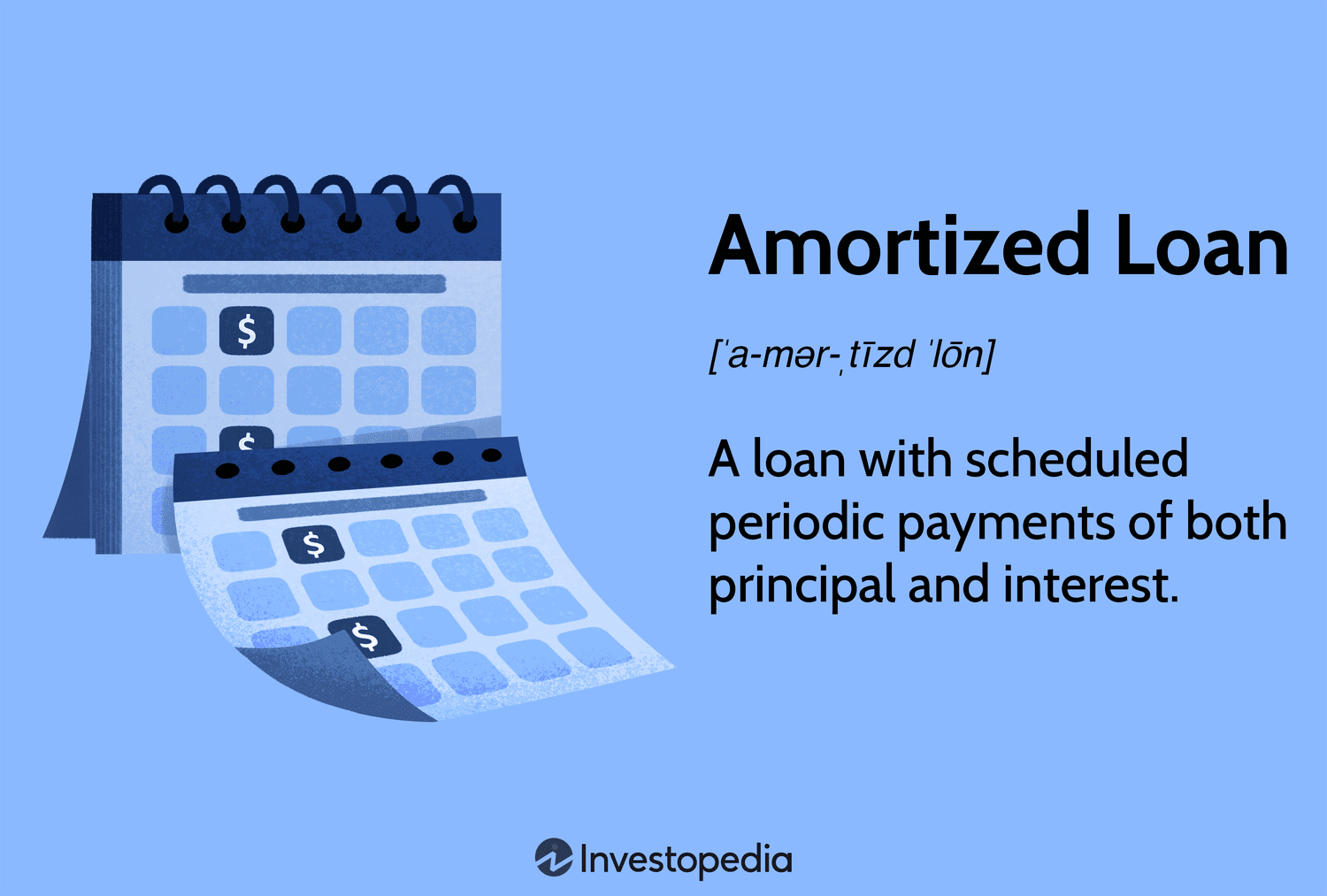Navigating the world of loans can be daunting, especially when trying to decide between a…
What Is an Amortized Loan?
An amortized loan is a type of loan that requires the borrower to make regular, scheduled payments over a set period. These payments cover both the interest and the principal balance of the loan. The term “amortized” refers to the gradual reduction of the loan balance over time through these regular payments.
How Amortized Loans Work
Amortized loans are structured so that each payment is split between paying down the principal amount borrowed and paying interest on the loan. Initially, a larger portion of the payment goes toward interest, with smaller amounts going toward the principal. Over time, as the principal balance decreases, the portion of each payment that goes toward the principal increases, while the portion that goes toward interest decreases.
This process is illustrated by an amortization schedule, which details each payment’s allocation between principal and interest, as well as the remaining balance after each payment.
Key Components of Amortized Loans:
- Principal: The original amount of money borrowed.
- Interest Rate: The percentage charged on the principal, which can be fixed or variable.
- Loan Term: The period over which the loan must be repaid.
- Payment Schedule: The frequency of payments, typically monthly.
Loan Types That Use Amortization
Several types of loans utilize the amortization process, including:
1. Mortgages
- Fixed-Rate Mortgages: These loans have a fixed interest rate for the entire term, providing predictable payments.
- Adjustable-Rate Mortgages (ARMs): These loans have interest rates that can change periodically, leading to variations in payment amounts.
2. Auto Loans
- Amortized over a fixed term, usually between three to seven years, with regular monthly payments.
3. Personal Loans
- Typically unsecured and amortized over a period ranging from one to five years.
4. Student Loans
- Can be either federal or private, with varying terms and amortization schedules.
Example of an Amortized Loan
Let’s consider an example to illustrate how an amortized loan works.
Example:
- Loan Amount: $200,000
- Interest Rate: 4% annual fixed rate
- Loan Term: 30 years
Monthly Payment Calculation:
The monthly payment for an amortized loan can be calculated using the formula:
[ M = \frac{P \times r \times (1 + r)^n}{(1 + r)^n – 1} ]
Where:
- ( M ) = monthly payment
- ( P ) = loan principal ($200,000)
- ( r ) = monthly interest rate (annual rate/12) = 0.04/12 = 0.003333
- ( n ) = number of payments (loan term in years (\times) 12) = 30 (\times) 12 = 360
Using the formula:
[ M = \frac{200,000 \times 0.003333 \times (1 + 0.003333)^{360}}{(1 + 0.003333)^{360} – 1} ]
After calculating:
[ M = \frac{200,000 \times 0.003333 \times 3.2434}{3.2434 – 1} = \frac{200,000 \times 0.003333 \times 3.2434}{2.2434} ]
[ M = \frac{200,000 \times 0.0108}{2.2434} ]
[ M = \frac{2160}{2.2434} = 962.34 ]
The monthly payment is approximately $962.34.
Amortization Schedule:
| Payment Number | Principal Payment | Interest Payment | Total Payment | Remaining Balance |
|---|---|---|---|---|
| 1 | $295.00 | $667.34 | $962.34 | $199,705.00 |
| 2 | $295.98 | $666.36 | $962.34 | $199,409.02 |
| 3 | $296.97 | $665.37 | $962.34 | $199,112.05 |
| … | … | … | … | … |
| 360 | $958.87 | $3.21 | $962.34 | $0.00 |
In this schedule, the first few payments are mainly interest, with only a small amount going toward the principal. As the loan progresses, the principal portion of each payment increases, and the interest portion decreases.
Benefits of Amortized Loans
- Predictable Payments: Borrowers know exactly how much they need to pay each month.
- Interest Reduction: Over time, the interest paid decreases as the principal balance reduces.
- Equity Building: With each payment, the borrower gains more ownership of the asset, particularly in the case of mortgages.
Drawbacks of Amortized Loans
- Initial Interest Load: Early payments are primarily interest, which can be a disadvantage for those who want to build equity quickly.
- Fixed Payment Schedule: Less flexibility if the borrower’s financial situation changes.
- Interest Costs: The total interest paid over the life of the loan can be substantial, especially for long-term loans like 30-year mortgages.
Conclusion
An amortized loan is a widely used financial product that provides a structured way for borrowers to repay debt over time. Understanding how amortization works, the types of loans available, and the implications of the amortization schedule can help borrowers make informed decisions and manage their finances effectively. Whether taking out a mortgage, an auto loan, or a personal loan, being aware of the amortization process and its effects on payments and interest costs is crucial for financial planning and stability.
